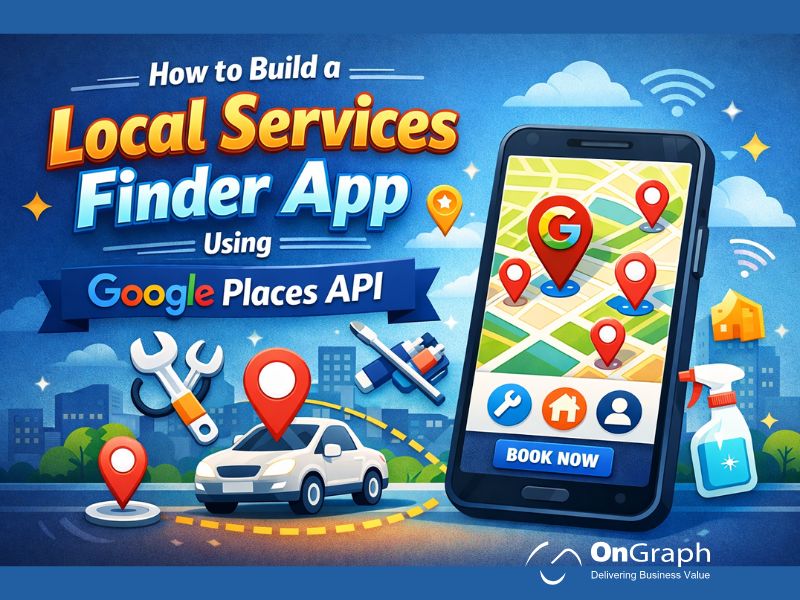In this article
- Why the Kenyan Market Is Ripe for Taxi Apps
- Current Ride-Hailing Options in Kenya
- How to Launch a Taxi App in Kenya: Step-by-Step
- Cost Breakdown: How Much Does It Take to Launch?
- Common Challenges and How to Overcome Them
- Growth Strategies Post-Launch
- Why Choose a White-Label Taxi App Solution?
- Conclusion
The transportation landscape in Kenya is rapidly evolving. From the matatu culture to the rise of boda bodas and digital ride-hailing platforms, there’s a clear shift in how people move across cities like Nairobi, Kisumu, Mombasa, and Eldoret. With demand growing and technology adoption accelerating, this is the best time to launch a taxi app and tap into Kenya’s emerging mobility revolution.
With smartphone adoption rising, mobile money platforms like M-PESA dominating everyday transactions, and the increasing need for safe, reliable, and regulated transport options—launching a taxi app in Kenya in 2025 presents a powerful opportunity.
In this article, we’ll explore the current state of Kenya’s ride-hailing industry, what’s fueling its growth, how to launch a taxi app (step-by-step), key challenges to watch out for, and what tools and technologies you’ll need to succeed.
Why the Kenyan Market Is Ripe for Taxi Apps
1. Explosive Mobile Adoption
Kenya is one of Africa’s mobile-first economies. According to GSMA, mobile internet penetration in Kenya is over 40%, with affordable smartphones becoming more accessible every year. Most ride-hailing users now access services through their phones—making mobile app-based taxi services a logical and scalable choice.
2. M-PESA: The Payment Backbone
Kenya’s payment infrastructure is arguably the most sophisticated in Africa. With over 30 million active users, M-PESA processes billions of dollars in peer-to-peer and commercial transactions annually. It enables instant fare payments, driver settlements, and even commissions tracking—without needing a traditional bank account.
3. Growing Urban Population
Cities like Nairobi, Mombasa, and Nakuru are expanding fast. With growth comes congestion, safety concerns, and the need for smarter mobility solutions. Digital taxi services help address all three, offering real-time tracking, vetted drivers, and route optimization.
4. Supportive Tech Ecosystem
Kenya is a hub for innovation. From startups in Nairobi’s Silicon Savannah to IT support across the country, there’s no shortage of development talent, infrastructure providers, and investor interest in digital transport solutions.
Current Ride-Hailing Options in Kenya
The Big Players
- Uber (launched in 2015)
- Bolt (formerly Taxify)
- Little Cab (a local player backed by Safaricom)
While these giants dominate in Nairobi, many counties remain underserved or untapped. That’s where regional players have the edge—by offering localized pricing, custom language support (e.g., Swahili), and integration with M-PESA.
How to Launch a Taxi App in Kenya: Step-by-Step
With rising smartphone usage, digital payments like M-PESA, and growing demand for on-demand mobility, this is truly the best time to launch a taxi app in Kenya. Here we are explaining key steps to launch your own taxi app for a thriving business.
Step 1: Define Your Business Model
Start by choosing your model:
- Aggregator (like Uber/Bolt)
- Franchise-style for existing taxi owners
- Corporate rides for business clients
- Niche-focused (e.g., only women drivers, boda boda, intercity travel)
Each comes with its own pricing, user flow, and regulatory needs.
Step 2: Choose the Right Tech Stack
You’ll need:
- Rider App (iOS + Android)
- Driver App with GPS and earnings tracking
- Admin Dashboard to manage users, trips, payments
- Payment Gateway: M-PESA, Stripe, Flutterwave, or PayPal
Pro Tip: Work with an OnGraph developer who offers a white-label solution to reduce costs and time to market.
Step 3: Integrate M-PESA
This is crucial. Your app must support M-PESA through:
- STK Push for rider payments
- C2B & B2C APIs for trip payments and driver settlements
- IPN Callbacks for transaction confirmations
This can be done via Safaricom’s Daraja API or trusted middleware platforms. Ensure your backend can securely handle this integration.
Step 4: Localize Your App
- Swahili/English toggle
- Custom SMS or WhatsApp trip alerts
- Option to book via WhatsApp (if no internet)
- Fare estimation in KES (Kenyan Shilling)
- Driver support in local dialects or regional languages
Localization builds trust—and boosts usage.
Step 5: Comply With Local Transport Laws
Kenya’s NTSA (National Transport and Safety Authority) regulates ride-hailing. Ensure:
- Drivers have PSV licenses
- Vehicles are insured
- Tax compliance is set up for earnings
Also consider formal partnerships with SACCOs or County authorities if expanding regionally.
Cost Breakdown: How Much Does It Take to Launch?
Here’s a realistic estimate for a ready-to-deploy app:
| Feature / Component | Cost (USD) |
| White-label App (Base) | $5,000 |
| M-PESA Integration | $1,800 (optional) |
| Extra Custom Features | $1,000–$2,500 |
| Hosting & Maintenance | $100/month |
| Total | $5,000 – $8,000+ |
Good news? You don’t have to pay all at once.
Many providers (like us) offer:
- Flexible plans (e.g., $500 to start + monthly fee)
- Add-on pricing for source code access
- Post-launch support included for up to 2 months
Common Challenges and How to Overcome Them
1. M-PESA Delays or Errors
Not all developers are familiar with M-PESA’s quirks. Ensure you work with someone who has integrated STK Push, B2C, and IPN flows before.
2. Driver Onboarding Bottlenecks
Make your driver sign-up seamless:
- Accept photos of PSV badge and ID
- Use AI to verify documents
- Offer a manual fallback for rural drivers
3. Offline Bookings
Many users in rural Kenya prefer calling or using WhatsApp. Consider adding a WhatsApp chatbot or admin booking panel.
4. Trust and Safety
Ensure every driver is verified, every trip is tracked, and support is available through chat or call. Build your brand on safety.
Growth Strategies Post-Launch
- Referral Rewards: Bonus for riders who bring in new users
- Loyalty Points: Repeat riders earn free trips
- Corporate Packages: Offer fixed monthly rates to businesses
- Regional Expansion: Start in Nairobi, then scale to Kisumu, Mombasa, Eldoret
Why Choose a White-Label Taxi App Solution?
Building from scratch can take 6–12 months and cost $20,000+.
White-label solutions:
- Cut development time to 4–6 weeks
- Come pre-built with driver/rider/admin modules
- Are customizable to your brand
- Include tested M-PESA and Stripe support
- Offer you source code access (if required)
Conclusion
Kenya’s digital transport sector is no longer just a trend—it’s a movement. But many counties and transport niches are still underserved.
If you’ve been thinking about entering this space, now is the best time to launch a taxi app. With the right tech partner, M-PESA-ready features, and flexible pricing, your business could be the next household name in Kenyan mobility.
👉 Contact us today to build a white-label taxi app.
FAQs
Yes, M-PESA is essential in Kenya. It’s the most widely used mobile payment system in the country, and both riders and drivers expect to use it. You’ll need to integrate STK Push, IPN, and possibly B2C APIs for driver payouts.
Absolutely. Many development providers offer flexible payment models, such as:
- $500 setup fee
- $100/month subscription
Option to buy source code later for $5,000
Yes, if you opt for the standard full-payment model. If you choose a flexible or subscription plan, source code may not be included by default but can be purchased at any time.
Nairobi, Mombasa, Kisumu, Eldoret, Nakuru, and other growing urban centers are excellent launch locations. Nairobi offers the largest user base, while secondary cities often have less competition and more room to grow.
Most providers offer 1 to 2 months of free support after launch. After that, you can opt for a monthly maintenance plan that covers server monitoring, bug fixes, updates, and support queries.
About the Author
Let’s Create Something Great Together!
Latest Blog
















